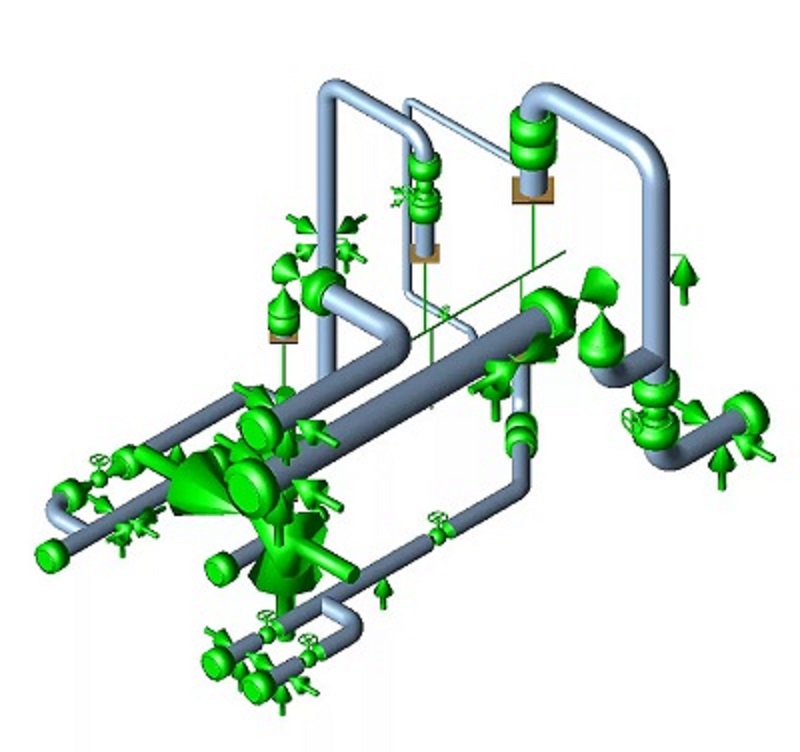In the complex world of industrial piping systems, ensuring safety, reliability, and efficiency is paramount. One crucial aspect of this process is piping flexibility analysis, a specialized field that helps prevent system failures due to thermal expansion, vibration, and external forces. At the heart of this discipline is the expertise of a stress analysis engineer, whose role is indispensable in designing and maintaining robust piping systems.
What Is Piping Flexibility Analysis?
Piping flexibility analysis is a critical process used to evaluate how piping systems respond to various stresses and loads. These include:
- Thermal Expansion: Pipes expand and contract due to temperature changes. Proper analysis ensures the system can accommodate these movements without damage.
- Internal Pressure: The pressure exerted by the fluid within the pipe can cause stress on the system.
- External Forces: Factors such as wind, seismic activity, and equipment vibrations can impact the integrity of the piping.
- Weight Loads: The combined weight of the pipes, fluid, insulation, and other components can strain the system.
By conducting a detailed flexibility analysis, engineers can identify potential weak points and design solutions to mitigate risks, ensuring the longevity and safety of the piping system.
The Role of a Stress Analysis Engineer
A stress analysis engineer specializes in evaluating and optimizing piping systems to ensure they can withstand various stresses and loads. Here’s what their role typically involves:
1. System Design and Optimization
Stress analysis engineers work closely with design teams to develop piping layouts that are both efficient and safe. They use advanced software tools to simulate real-world conditions and ensure the system meets industry standards.
2. Load and Stress Calculations
These engineers perform detailed calculations to analyze the effects of thermal expansion, pressure, weight, and external forces on the piping system. They ensure the system remains within acceptable stress limits to avoid failures.
3. Compliance with Codes and Standards
Stress analysis engineers ensure that piping systems comply with industry codes such as ASME B31.1 and B31.3. Adhering to these standards is critical for regulatory approval and operational safety.
4. Problem-Solving and Troubleshooting
When issues arise, stress analysis engineers identify the root cause and recommend corrective actions. This may involve redesigning pipe supports, rerouting pipelines, or implementing other modifications.
Why Is Piping Flexibility Analysis Important?
Proper piping flexibility analysis offers several key benefits:
- Prevention of Failures: Identifying and addressing potential issues early reduces the risk of leaks, ruptures, and other failures.
- Increased System Efficiency: Optimized piping designs minimize energy loss and improve overall performance.
- Compliance and Safety: Ensures the system adheres to industry codes, protecting both the facility and its operators.
- Cost Savings: Proactive analysis reduces maintenance costs and downtime by preventing unexpected failures.
Tools and Techniques Used in Piping Flexibility Analysis
Stress analysis engineers rely on specialized software and tools to perform their work effectively. Popular tools include:
- CAESAR II: A widely used software for piping stress analysis and design.
- ANSYS: A powerful simulation tool for thermal and mechanical analysis.
- ROHR2: A software solution for static and dynamic analysis of piping systems.
These tools allow engineers to create detailed models of piping systems, simulate real-world conditions, and make data-driven decisions to optimize performance.
Partnering with a Qualified Stress Analysis Engineer
Hiring a skilled stress analysis engineer is essential for ensuring the safety and reliability of your piping systems. Look for professionals with:
- Extensive experience in piping flexibility analysis.
- Familiarity with industry codes and standards.
- Proficiency in advanced analysis tools.
- A track record of successful projects in your industry.
Conclusion
Piping flexibility analysis is a cornerstone of safe and efficient piping system design. With the expertise of a stress analysis engineer, you can ensure that your system is built to withstand the challenges of real-world operation. By investing in thorough analysis and skilled engineering, you’ll protect your assets, enhance performance, and achieve peace of mind.
If you’re planning a new project or need assistance with an existing system, consider partnering with experienced stress analysis engineers to ensure your piping system’s success.





Comments